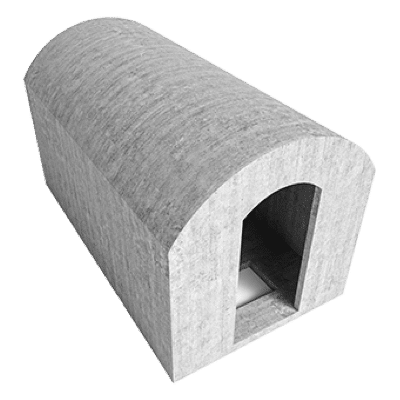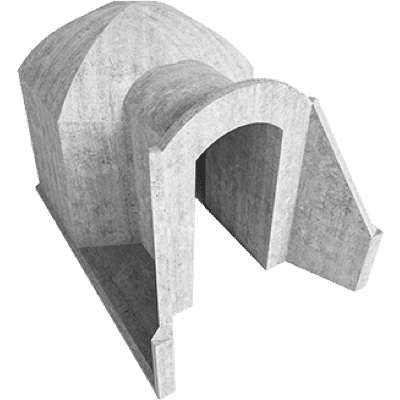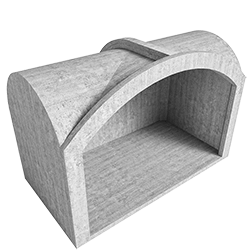The sauna has been a part of people’s daily lives for centuries. History, cultural traditionsa and different construction styles have shaped the evolution of saunas. While modern saunas come in many variations, they all share a common goal: to provide relaxation and health benefits.
The history of the sauna dates back thousands of years. Traditionally, saunas have been places for cleansing not only the body but also the mind. The earliest sauna structures were small ground-level constructions, but over time, cave saunas, underground saunas and above-ground saunas were developed.
The Nordic countries and the Baltic region have particularly strong sauna cultures. For example, in Finland, sauna culture is an integral part of national identity, with about 99% of the population regularly using a sauna. In Estonia and other Nordic countries, saunas remain a traditional part of daily life, with approximately 80-90% of people visiting saunas regularly.
How does a cave sauna differ from a traditional sauna?
A cave sauna is one of the oldest types of saunas, particularly popular in the Nordic countries, especially in Finland and Estonia. Cave saunas were often created using natural caves or by excavating large underground rooms where the walls provided ideal conditions for heat retention. The most significant advantage of a cave sauna is that it offers natural underground cooling and heating, something an above-ground sauna may not always provide.
Since the walls of a cave sauna are surrounded by the earth, they efficiently retain heat and moisture, creating a soft, comfortable warmth inside the sauna. One historical challenge of cave saunas has been poor ventilation. However, Revonia cave saunas have solved this issue with a modern ventilation system that allows fresh air to enter while ensuring proper air circulation for an enjoyable sauna experience. Additionally, cave saunas are typically smaller, making them ideal for just a few people.

A traditional sauna, on the other hand, is mostly built from wood or stone materials. It has been modernized and is suitable for various climate conditions. While cave saunas are often modest, traditional saunas stand out for their luxurious and stylish appearance, offering all modern comforts. Traditional saunas are also typically larger and more spacious, allowing multiple people to relax at the same time.
Which sauna retains heat better: underground or above-ground?
Underground saunas have historically been very common in Estonia and Finland. These saunas are usually dug into the ground, providing excellent insulation and protection against the cold. Underground saunas are generally smaller but retain heat exceptionally well. They are also highly resistant to strong winds and heavy rain.
An above-ground sauna, as the name suggests, is built on the surface and is the most common sauna type today. It is easier to access and simpler to construct. Many above-ground saunas are designed with a luxurious touch, often featuring large windows to enjoy scenic views from the sauna bench.
What is a vaulted sauna?
A vaulted sauna features a unique arched ceiling, giving it distinct acoustics and visual appeal. This ceiling structure enhances air circulation, ensuring a more even distribution of heat. Vaulted saunas are typically more challenging to build, but their special design and functionality make them highly desirable.
Concrete saunas are an excellent choice as they can retain heat for several days, providing a consistent and long-lasting warmth. Concrete is a natural material that does not release chemicals when exposed to heat, making it a healthier option. One of its outstanding properties is that it does not cool down quickly, even after pouring water on the hot stones or when the fire has burned out, ensuring steady and lasting warmth. Concrete saunas are also airtight, meaning fresh air replaces oxygen-depleted air without cooling the sauna down. Heat escapes only from designated areas, maintaining an optimal sauna experience.
Every sauna—whether a cave sauna, an above-ground sauna, or an underground sauna—offers something unique. However, regardless of the type, the main purpose of a sauna has always been to provide relaxation, health benefits, and peace of mind.
If you want more information about Revonia saunas, request a quote and discover how our saunas can enhance your quality of life and daily routine.




